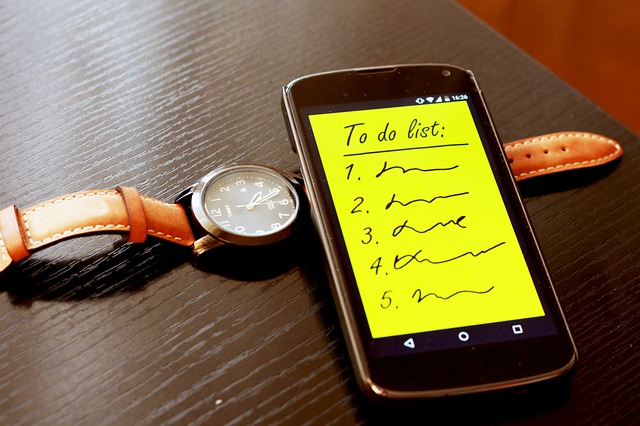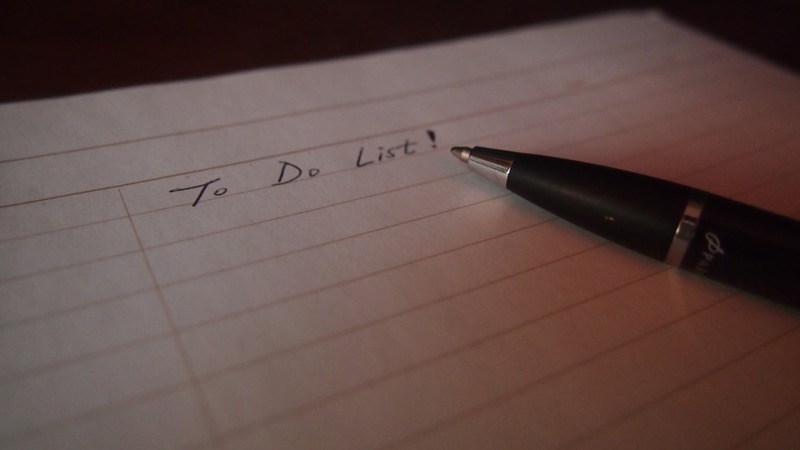Day 16: Design and Control Each Tomorrow By Making a To-Do List Each Night

This is day 16 of our 30 day series “30 Simple Things to Do to Change Your Life in 30 Days. If you missed a day, links to previous articles follow this article.
How often do you start your day feeling overwhelmed by the sheer number of tasks you need to complete? Or worse, find yourself at the end of the day feeling like you’ve achieved little of what you set out to do? If this sounds familiar, it’s time to rethink how you approach your day. The good news? There’s a simple yet powerful tool that can help you take control of each day and design your future with intention—a to-do list.
On Day 16 of our 30-day challenge, we’ll explore how creating a to-do list each night can set you up for success and why it’s crucial to include not only work tasks but personal priorities and the people in your life as well.
The Power of a To-Do List
A to-do list is more than just a list of tasks to check off. It’s a roadmap for your day, a way to stay organized, and a tool to help you focus on what truly matters. When you take time each night to plan your next day, you wake up with clarity and direction. Instead of scrambling to figure out where to start, you already have a clear plan in place.
Here are a few reasons why creating a to-do list the night before can be life-changing:
Reduces Morning Stress and Anxiety
One of the biggest benefits of writing your to-do list at night is that it allows you to offload all the tasks, responsibilities, and worries that are floating around in your head. Instead of lying awake thinking about what needs to get done, you can put it all down on paper, freeing your mind to rest. Then, when you wake up, you don’t have to waste energy deciding what to do first. You simply follow the plan.
Improves Focus and Productivity
Having a clear list of priorities allows you to stay focused on what’s most important. Without a plan, it’s easy to get distracted by minor tasks or interruptions throughout the day. A well-constructed to-do list helps you allocate your time wisely, focus on the tasks that matter most, and prevent the feeling of being “busy” but unproductive.
Promotes a Sense of Accomplishment
There’s something deeply satisfying about checking off items on a to-do list. Every time you complete a task, you get a little boost of motivation, which encourages you to keep going. Over time, this sense of accomplishment can improve your self-confidence and help you build momentum toward achieving larger goals.
Encourages Intentional Living
Without a to-do list, it’s easy to let your day unfold reactively, responding to emails, interruptions, and distractions as they arise. By making a list, you’re being intentional about how you want to spend your time and energy. You design your day with purpose, ensuring that you’re working toward your personal and professional goals rather than letting life control you.

Designing a Balanced To-Do List
While it’s easy to fill your to-do list with work-related tasks, it’s important to remember that your life isn’t just about work. A well-rounded to-do list includes tasks from all areas of your life, including personal goals, self-care, and time with loved ones. This balance ensures that you’re not only productive but also prioritizing your well-being and relationships.
Here’s how to create a balanced to-do list:
Prioritize Your Work Tasks
Start by listing the key work-related tasks that need to be done the next day. These could include deadlines, meetings, projects, or anything that directly impacts your professional responsibilities. Try to limit this list to 3-5 major tasks to avoid feeling overwhelmed.
Ask yourself:
- What is the most important thing I need to accomplish tomorrow?
- What tasks will have the biggest impact on my progress?
Include Personal Items
It’s easy to overlook personal tasks when planning your day, but these are just as important for your overall happiness and well-being. Whether it’s running an errand, exercising, or simply taking time to read a book, include personal items on your list. These tasks can help you maintain balance and ensure that you’re taking care of your personal needs alongside your professional ones.
- Personal items might include:
- Exercise or yoga
- Reading or learning something new
- Journaling or meditation
- Preparing a healthy meal
- Running errands or completing household chores
Make Time for People
One of the most important, yet often neglected, parts of life is the time we spend with others. Building strong relationships requires effort, and making time for the people you care about should be a priority. Adding people to your to-do list is a simple but powerful way to ensure you’re nurturing your relationships.
Whether it’s scheduling a phone call with a friend, spending time with family, or simply checking in on a loved one, be intentional about the relationships you want to nurture.
Examples could be:
- Calling a friend or family member
- Planning a date night or time with your partner
- Reaching out to someone you haven’t connected with in a while
- Scheduling a coffee or lunch with a colleague

Practical Tips for Creating Your To-Do List
To get the most out of your to-do list, it’s important to approach it with intention and practicality. Here are some tips for creating a list that works:
Be Realistic About Your Time
It’s tempting to overload your to-do list with every single task you can think of, but this often leads to frustration and burnout. Instead, be realistic about what you can accomplish in a day. Focus on a few high-priority tasks and leave room for unexpected interruptions.
Categorize Your Tasks
Consider categorizing your tasks to create more structure. You might divide your list into categories like “Work,” “Personal,” and “Relationships” or use time-based categories like “Morning,” “Afternoon,” and “Evening.” This helps you stay organized and ensures that you’re giving attention to all areas of your life.
Use the 80/20 Rule
The 80/20 rule, also known as the Pareto Principle, suggests that 80% of your results come from 20% of your efforts. When creating your to-do list, identify the tasks that will have the biggest impact and prioritize those. Focus on the few tasks that will move you closer to your goals rather than trying to do everything.
Break Down Big Tasks
If you have a large, overwhelming task, break it down into smaller, manageable steps. For example, if you’re working on a major project, your to-do list might include specific tasks like “outline the presentation,” “gather research,” or “draft the first section.”
Review and Adjust
At the end of each day, review your to-do list and adjust it as needed for the next day. If certain tasks weren’t completed, you can carry them over, but also assess why they weren’t done. Did something unexpected come up? Was your list too long? Use this reflection to refine your approach and improve your planning process.
Making To-Do Lists a Habit
Consistency is key when it comes to creating to-do lists. Here’s how to make this practice a daily habit:
Set aside time each night to write your list for the next day. This could be part of your evening wind-down routine.
Keep your list visible—whether it’s a notebook, an app, or a sticky note, keep your to-do list in a place where you can easily reference it throughout the day.
Celebrate small wins—at the end of the day, take a moment to celebrate the tasks you completed. This positive reinforcement will motivate you to keep going.
Design Your Tomorrow
By taking just a few minutes each night to plan your day, you’re not only increasing your productivity but also taking control of your time and designing the life you want to lead. Making a to-do list helps you stay focused, reduce stress, and ensure that you’re making time for what truly matters—whether that’s your work, personal goals, or the people you love.
So tonight, before you go to bed, grab a pen and paper and start planning. It’s a small, simple habit that can make a big difference in how you approach each day—and ultimately, how you live your life.
Previous articles in this series can be found here:
- Day 1: Start a Morning Routine.
- Day 2: Setting Clear Goals to Create a Roadmap for Success
- Day 3: The Benefits of Gratitude – It’s Not Just a New Age Cliché
- Day 4: The Benefits and Myths of Staying Hydrated
- Day 5: Yes, Organizing Your Space Impacts Focus and Productivity
- Day 6: You Hate Exercise? Here’s Easy Ways to Get Some and Love It!
- Day 7: Admit it – You’re Addicted to Social Media. Here’s the Damage You’re Doing, and How to Stop
- Day 8: Meditation – It’s Not What You Think, and You’re Already Doing It
- Day 9: Reading is Feeding Your Mind: Is Your Mind Malnourished?
- Day 10: The Truth About Sleep – And The Myths You Need to Dismiss
- Day 11: The Value of Journaling – And How to Easily Make it a Habit
- Day 12: Life Is More Than Work. Get a Hobby!
- Day 13: Dining Budget and Belt Getting Tight? How Eating More at Home Can Be Enjoyable and Healthy
- Day 14: Nature is Calling. You Need to Go!
- Day 15: Put a Little Love in Your Life: All the Benefits of Using Affirmations

